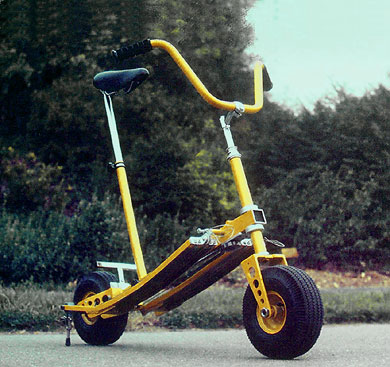
|
|

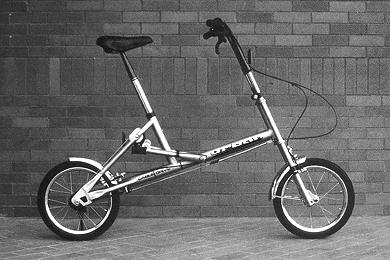
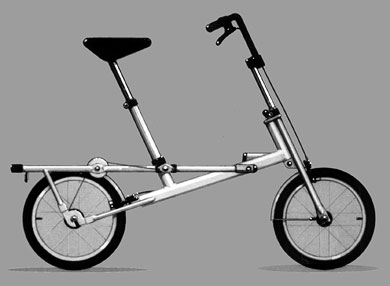
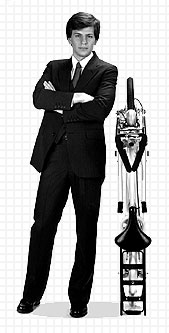
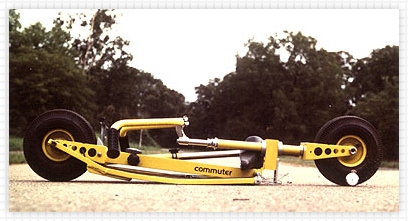
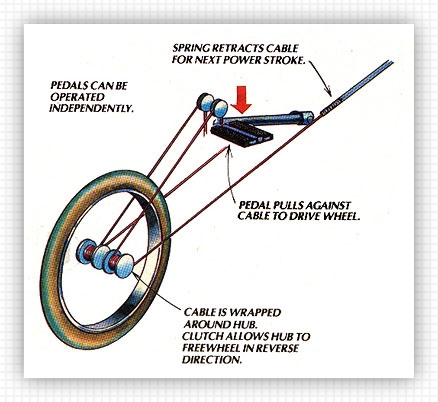
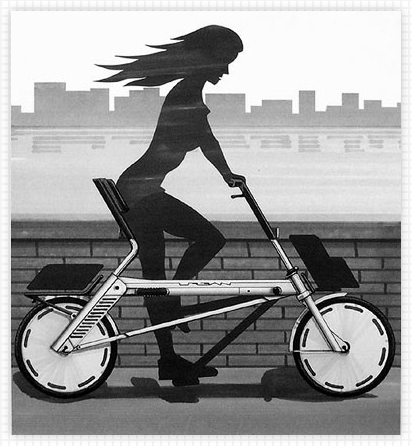
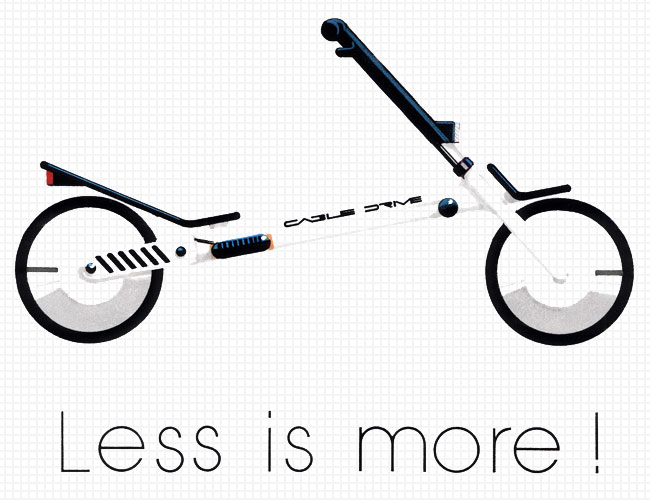
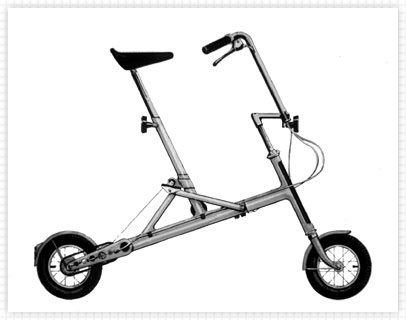
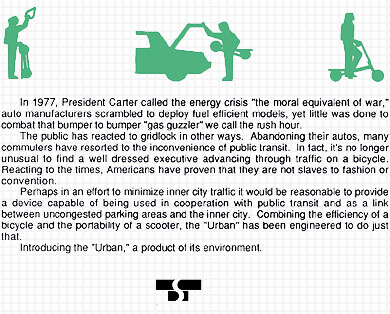
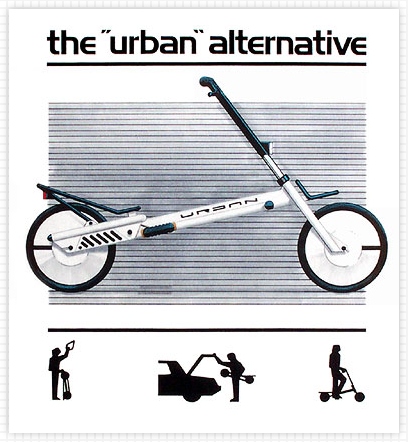
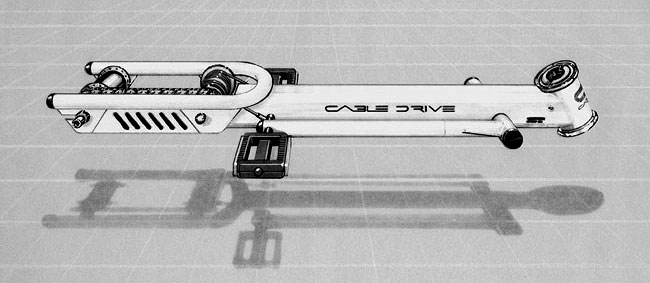
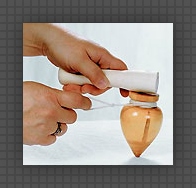
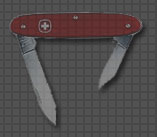
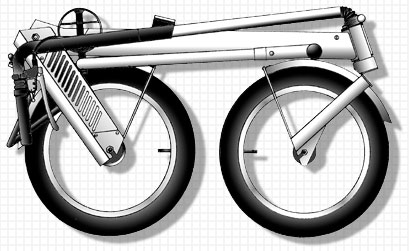
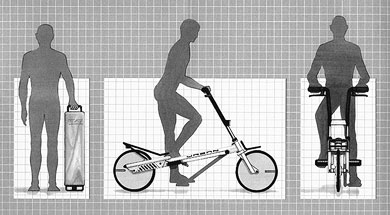
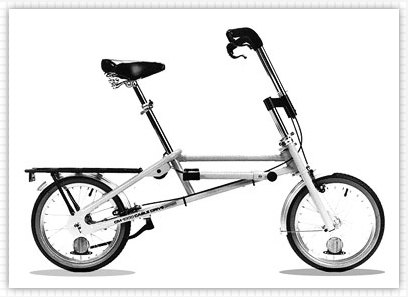
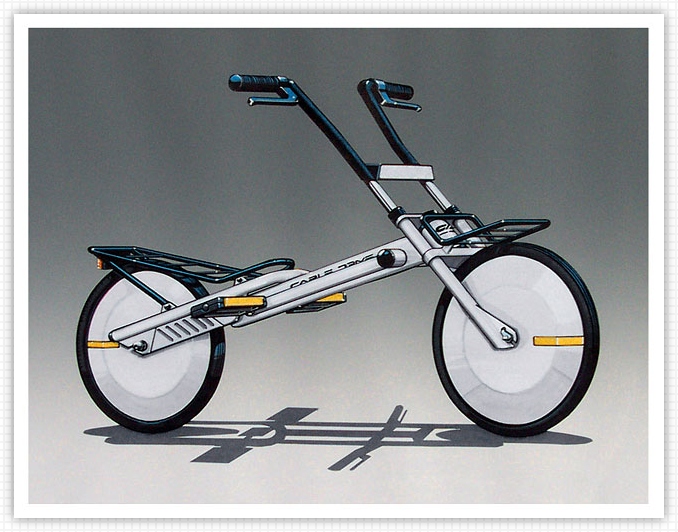
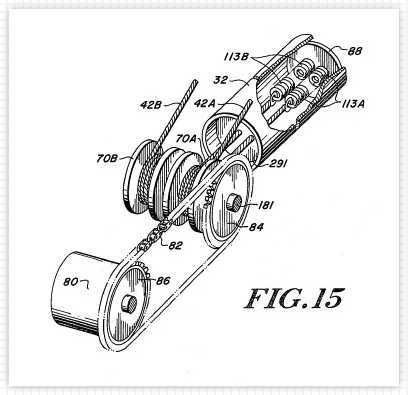

The "Commuter" The invention was the eventual result of my senior thesis while at college. The year was 1975 and the "energy crisis" was getting under way with motorists lined up at gas stations and government appeals to the public for energy conservation. President Carter called the energy crisis the "moral equivalent of war". Observing the inefficiency of fuel consumption associated with urban traffic patterns, I set out to identify why the more efficient transportation alternative, public transit, was not being used to its full potential. There were various reasons but one in particular that prompted the design project. Unlike automobiles, public transit cannot offer door-to-door transportation. Its use requires commuters to walk at both ends of the trip. Perhaps if there were some way to minimize the time and energy of those walks, public transit would be a more attractive transportation alternative. Bicycles are five times more efficient than walking but not sufficiently portable for bringing to the office, let alone a crowded train. In fact the public transit environment would pose the toughest portability challenge. Folding bikes were not a new idea, but even the most compact design with its 16' wheels was not practical on a crowded train. In terms of the size and shape, a compacted vehicle would have to fit into what little empty space remains between passengers crowded into a train at rush hour. Its volume would have to be distributed vertically from the floor, stand about waist high so that a person could hold onto it comfortably, and be no wider than that person. This highly visible, optimally shaped volume would also prevent the tripping hazard otherwise associated with leaving any conventional folding bike on the floor of a crowded train. It should be roughly 36" high x 20" x 10". An ideal "footprint" of course would be as small as possible. Folding scooters were already common in Europe but a pedaling system like a bicycle's would be necessary to achieve the desired efficiency, speed and therefore consumer acceptance. The vehicle's wheels would have to be much smaller than the 20" maximum width. But, smaller wheels required higher RPM's to achieve the same speed as full-sized bicycles. As the diameter of the driven wheel decreases, the chain and sprocket drive of a bicycle must increase in size and becomes a spatial problem in itself. The design called for a new transmission system capable of developing high rpm's at the drive wheel yet occupying minimal space in the compacted mode. Many design directions were explored involving various riding positions, frame configurations and seating alternatives. The number and sizes of wheels, mechanical transmission concepts, mechanical details for hinging, frame locks, brakes, steering, and suspension, were studied. After extensive research, I identified the following design objectives. Design Objectives: The primary purpose of course was to decrease urban traffic, fuel consumption and pollution by providing a personal vehicle, that could be conveniently used in combination with public transit and automobiles. The scope of this project required research into many areas and resulted in the following specific objectives. - Two or more wheels - Positive steering control - Positive braking control -Comfortable powered by operator with minimal effort - Top speed, 12 mph. - Easy mount and dismount - No interference with clothing - To accommodate riders ranging from 2.5%tile woman to 97.5%tile man - Easy to operate -Safe to ride in an urban environment (must meet all CPSC requirements) -Maximum visibility (to see and be seen) - Maneuverable in tight spaces - Theft proof - Mechanically simple, low maintenance -Provision for small parcels or backpack - Compacted in under 30 second requiring no tools, special strength or coordination - Easily carried when compacted - Could be taken comfortably onto crowded public transit…(worst case portability requirement) - Vertically oriented package, using minimal floor space, approximately 36 inches high - Must not soil clothing or cause personal injury in crowded environments - Affordable, $300 max retail (use standard components where possible) Working with those constraints, I invented a small bicycle called the “Commuter” with a flat-folding pedaling mechanism. The mechanism transmitted the rider's weight alternately between two treadles via separate lengths of flexible stainless steel cable to produce high RPM's at the bicycle's ten-inch drive wheel. There are essentially three advantages… Simplicity: Structural and mechanical simplicity minimizes weight and cost while also maximizing portability, convenience and safety. Efficiency: Powered by an upright riders stepping motion, it improved pedaling efficiency as well as visibility and comfort. The cable drive pedaling system harnesses maximum leg thrust and utilizes the rider's weight to power the vehicle. Portability: The spatially efficient vertical shape when folded minimized the floor space needed on crowded trains and elevators. Senior Thesis research and design concept merited a grade of "Honors". |
Design Evolution |
The "Commuter" - the first vehicle to use the patented Cable Drive pedaling system. |
"Commuter" prototype folded flat. |
How Cable Drive works. |
The "Urban" was the second bicycle to use Cable Drive. |
The "Commuter 2" concept - 3-speed hub and disk brakes. |
CMI concept with folding front fork. |
"CM 1000" |
Stepcycle: This step action scooter can be pedaled from a standing posture to improve visibility, and efficiently uses the rider's weight to achieve bicycle speeds. The vehicle, targeted to students and commuters, is sufficiently portable for crowded trains and elevators. It uses a unique bolt-together frame combining aluminum and steel frame parts to minimize weight. The "frame" also accepts many standard components, allowing the introduction of several different products with minimal tooling costs. A Bolt-together modular, powder-coated frame minimizes welding and combines an extruded aluminum main frame with chrome-molly front and rear forks. The scooter is driven by 3/32, 7x19, 1,000 lb. test stainless steel aircraft cable jacketed with nylon. The cables are coupled to roller clutch drives either at the drive wheel or to a compact multi-speed belt or chain system coupled to the wheel. Folded size - 33"x 21" x 8", weight -20lbs. . |
After college I began working on a US Patent application. The Cable Drive bicycle gained notoriety in several trade journals and popular magazines. I conducted investor presentations, raised approximately 1 million dollars and founded Creative Motion Industries Inc. Later I received U.S. and foreign patents and developed a portable commuter bicycle called the "CM1000". The design was featured in over 60 print articles worldwide and TV interviews across the country including ABC's "Good Morning America". It attracted international interest including mail order catalogs like Shaper Image, Hammacher Schlemmer and Abercrombie & Fitch. |
Jazz great Dizzy Gillespie once said," It took me a lifetime to learn what notes not to
play". |
© Copyright 2005-2010 Fore-thought Designs™ All Rights Reserved. |
"The design called for a new transmission system capable of developing high rpm's at the drive wheel yet occupying minimal space in the compacted mode". |
"I used to work in a fire hydrant factory. You couldn't park anywhere near the place". - Steven Wright |
The "Stepcycle"s frame allows the wheels to fold toward each other once the handle bars are pulled up and folded flat to the frame. |
"You never really learn to swear until you learn to drive". -Unknown |
U.S Patent |
"Perfection is achieved, not when there is nothing more to add, but when there is nothing left to take away." - Antoine de Saint Exupery |
The Cable Drive system can be configured to integrate standard multi-speed hubs. |
INVENTIONS FOR LICENSE |
Invest in solutions. |